While bananas are a familiar fruit around the world, there's more to the plant than just the fruit. The banana blossom (or banana heart) appears at the end of the banana fruit cluster and is a versatile, edible part used in a variety of dishes. Let's explore this unique ingredient and its role in Filipino cuisine.
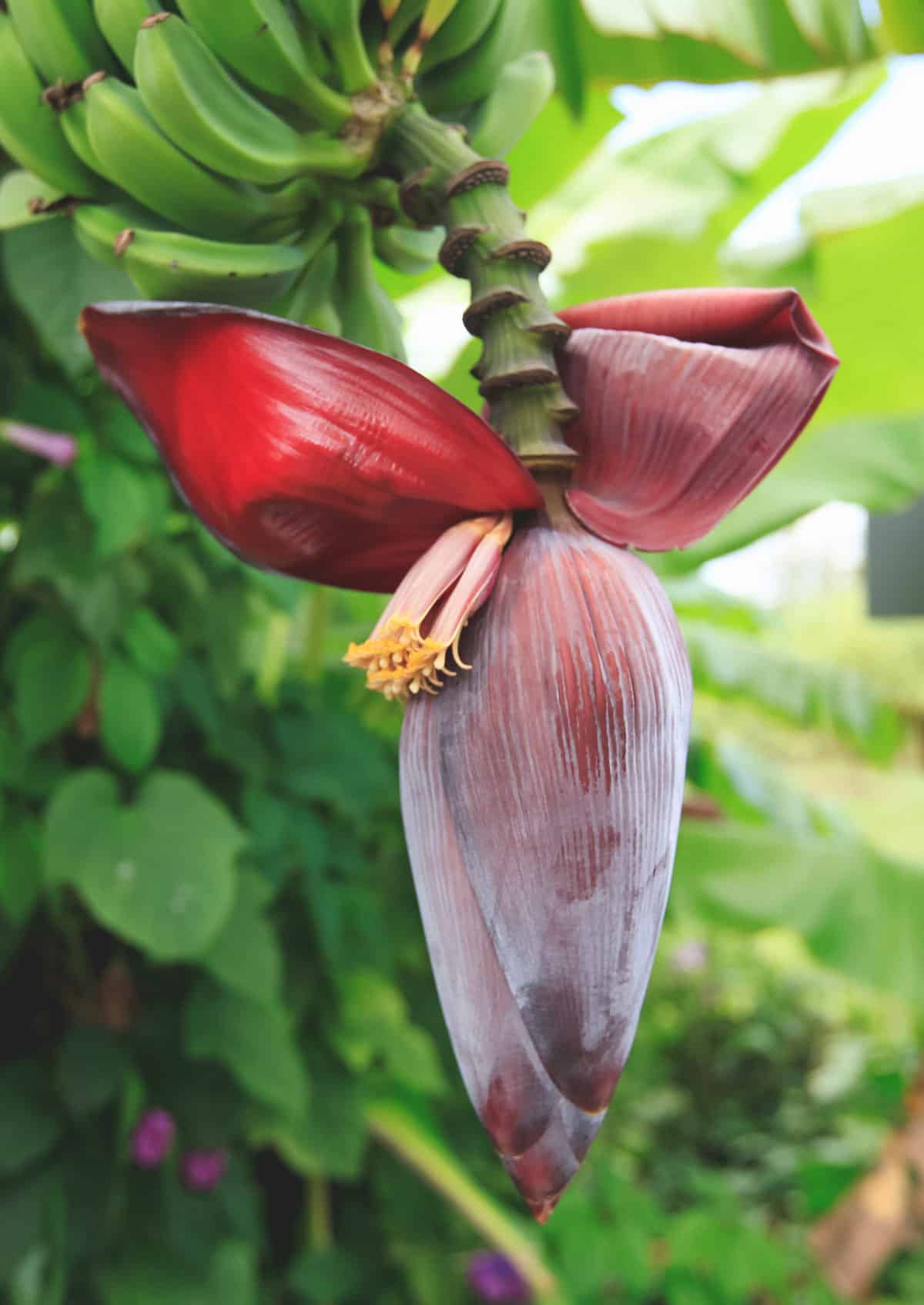
Jump to:
What is banana blossom?
The banana blossom, known as banana heart or "puso ng saging" in Filipino, is part of the banana plant that forms at the end of the fruit clusters. It is a large, drooping tear-shaped flower with tough, purple-red outer layers and paler, edible inner core.
Its presence is a sign that the banana fruits are approaching ripeness. In Southeast Asian cuisine, it is prized not only for its culinary versatility but also for its rich nutritional profile.
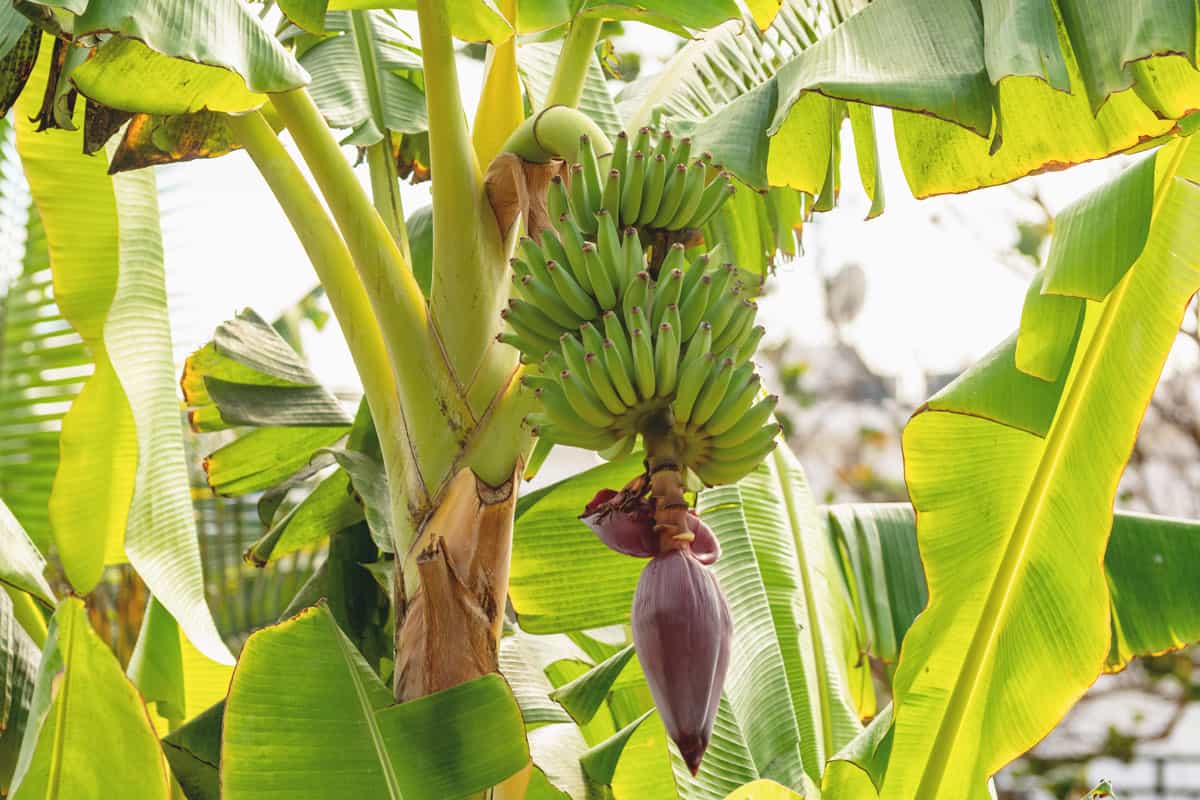
What does banana blossom taste like?
The banana blossom has a neutral taste, similar to artichokes, but can have a slightly astringent and bitter flavor before it's cooked. It has a meaty, fibrous texture that's slightly chewy and crunchy.
This makes it a popular choice among vegans and vegetarians as a plant-based meat substitute, like how jackfruit is used, as it easily absorbs the flavors of the ingredients it's cooked with and adapts well to a variety of dishes.
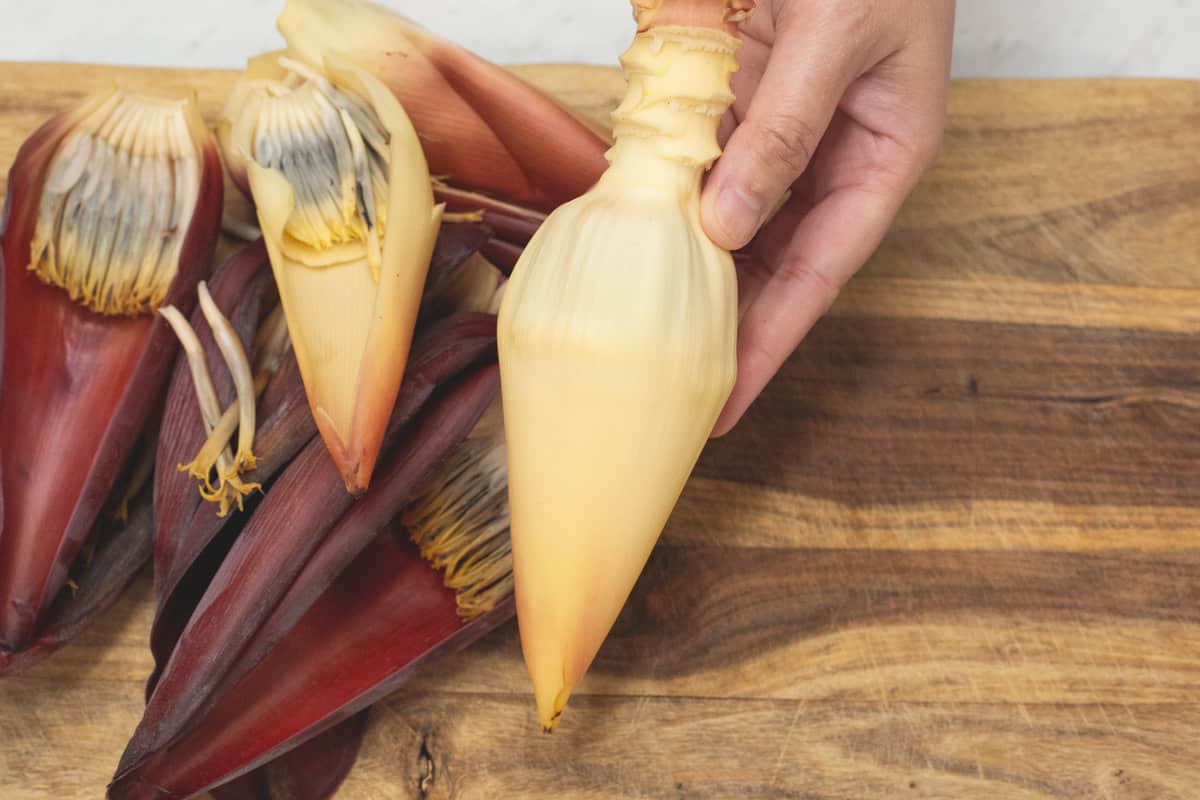
Are banana blossoms healthy?
Banana blossoms are considered healthy, known for being rich in fiber, vitamins, minerals, and antioxidants. They have potential health benefits such as improving digestion, reducing inflammation, and supporting heart health.
However, it's always best to consult a healthcare professional before making significant changes to your diet, particularly if you have existing health conditions or dietary restrictions.
Where do I find banana blossoms?
Fresh banana blossoms are typically found hanging from banana trees, mainly in tropical and subtropical regions. If you don't have access to banana trees, you can look for fresh banana blossoms at Asian or international grocery stores, especially those that specialize in Southeast Asian ingredients. Canned banana blossoms, often preserved in brine, and dried banana blossoms (bulaklak ng saging) are also available.
How are banana blossoms prepared?
To prepare banana blossoms, peel away the many layers of inedible dark purple leaves until you reach the lighter, tender inner core or heart. It is typically pale yellow or cream in color and is the part you'll use for cooking.
Slice the banana blossom and soak the pieces in water mixed with lemon juice or vinegar to prevent browning; massaging the pieces with coarse salt also helps remove any residual sap and bitterness. Keep them submerged until you're ready to use, then rinse thoroughly to wash away the salt and any remaining sap.
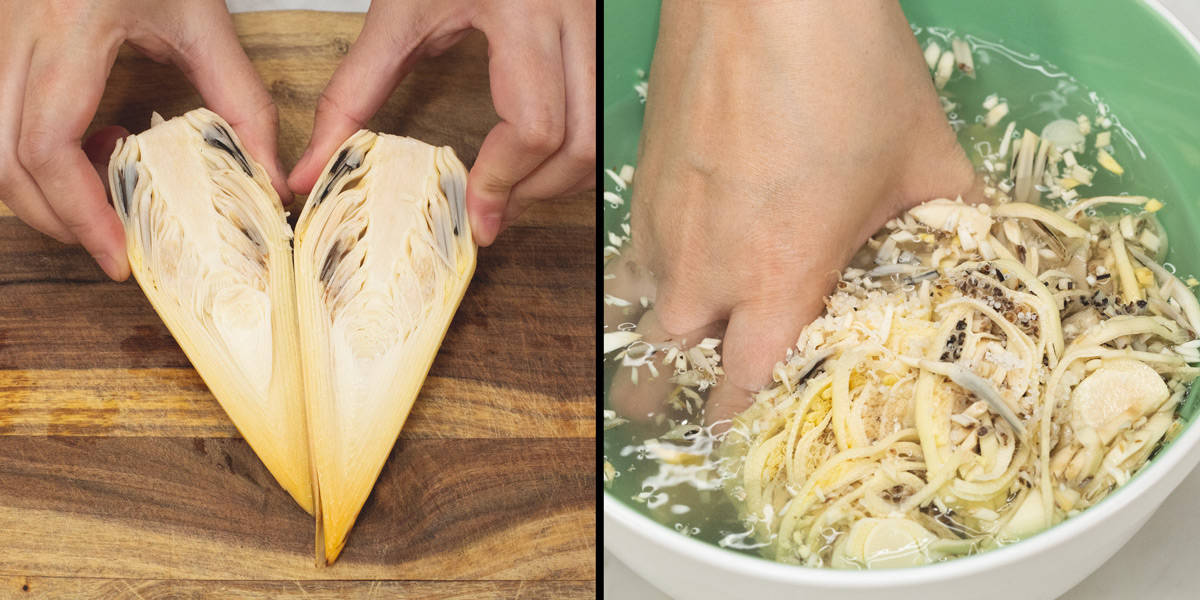
Dried banana blossoms (also known as bulaklak ng saging or kinchamsay) are the small flowers nestled between the larger petals of the banana blossom. They are typically soaked in soy sauce and vinegar, then dehydrated under the sun. These are used in Filipino stews like Humba and Paksiw na Pata to add flavor and texture.
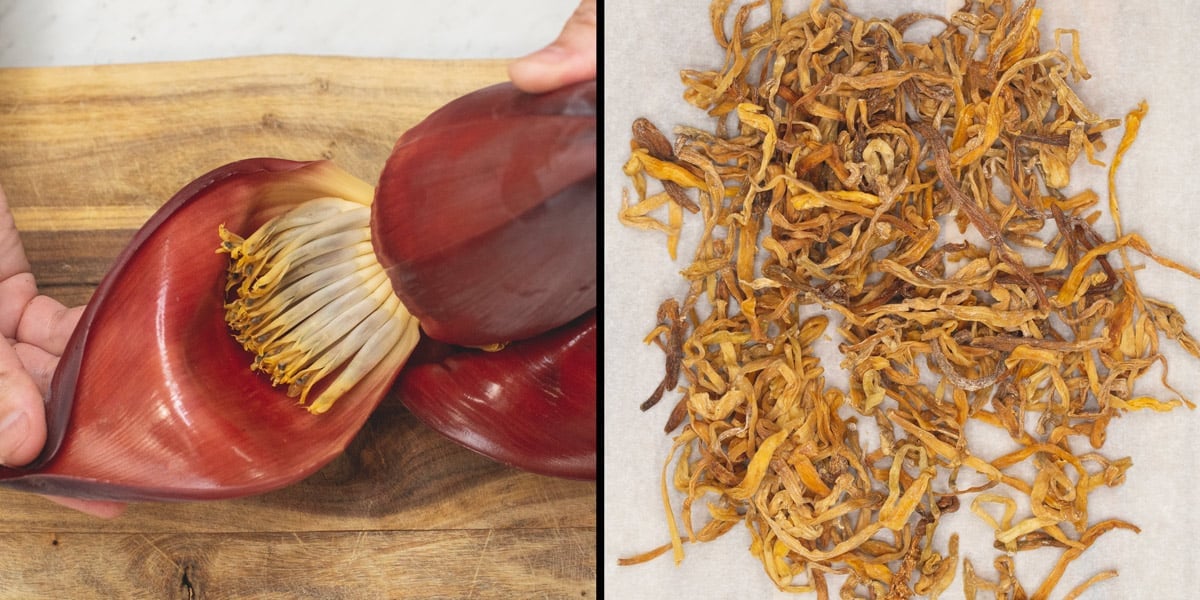
Filipino recipes using banana blossoms
While gaining popularity today as a meat substitute, this vegetable has been a staple in Filipino cooking. Here are some classic Filipino dishes that showcase the versatility of banana blossoms.
- Ginataang Puso ng Saging: A creamy, spicy dish where banana blossoms are cooked in coconut milk, often with shrimp paste.
- Kilawing Puso ng Saging: Banana blossoms cooked in vinegar and aromatics.
- Kare-Kare: A rich peanut stew typically made with oxtail, with vegetables like banana blossoms for added texture and flavor.
- Tortang Puso ng Saging:
- Humba: A sweeter version of adobo with dried banana blossoms and fermented soybeans.
- Pata Tim: A stew with pork leg and dried banana blossoms, seasoned with soy sauce and star anise.
- Paksiw na Pata: A stew with pork hock and dried banana blossoms, simmered in vinegar and soy sauce.
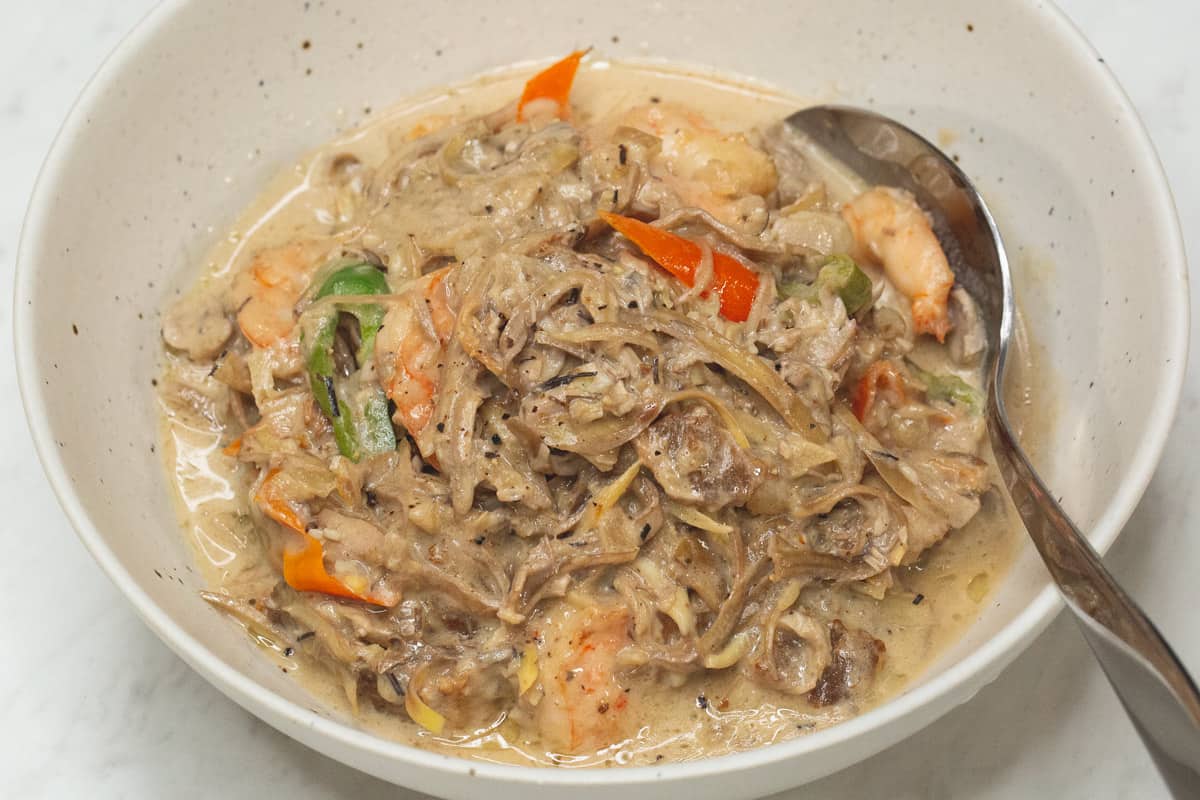
Other ingredient guides you may like

Did you like this post? I would love to know! Your feedback helps me make better recipes. Please rate, review, or comment below. Questions about this post are welcome, too!
Let's connect on Facebook, Instagram, Pinterest, TikTok, Twitter, and Youtube. Be sure to tag me when you try any of my recipes @recipesbynora!








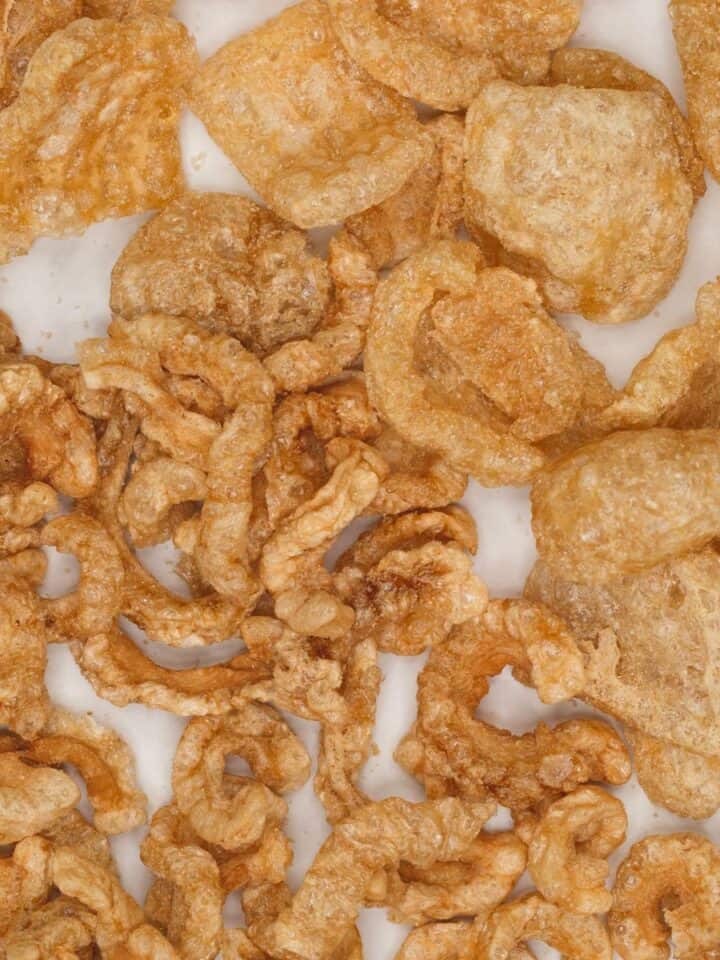


Jen
Thanks for this post. Very helpful
Nora Reyes
So glad! Thank you!